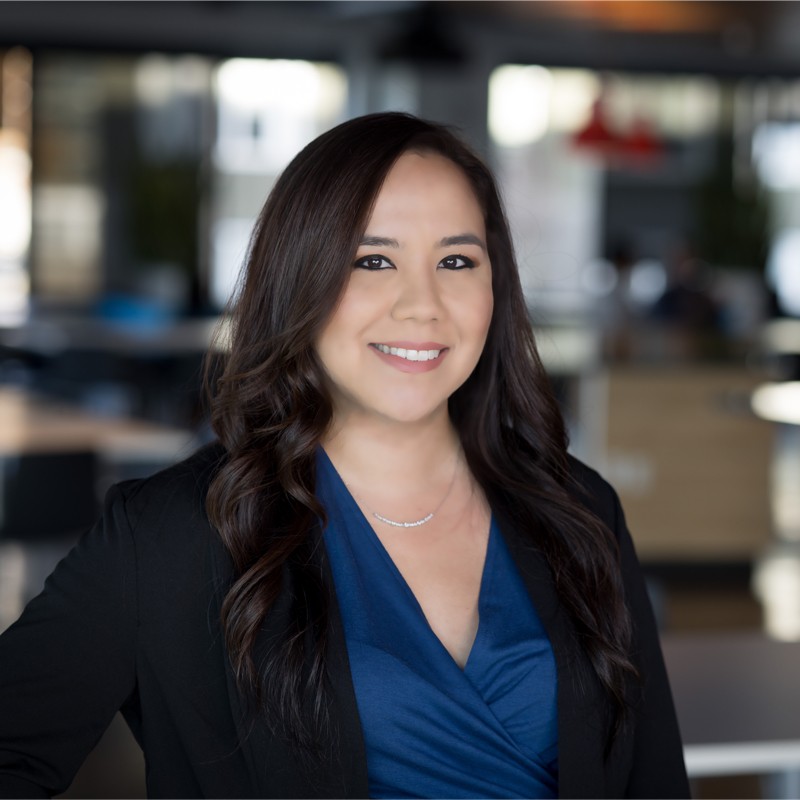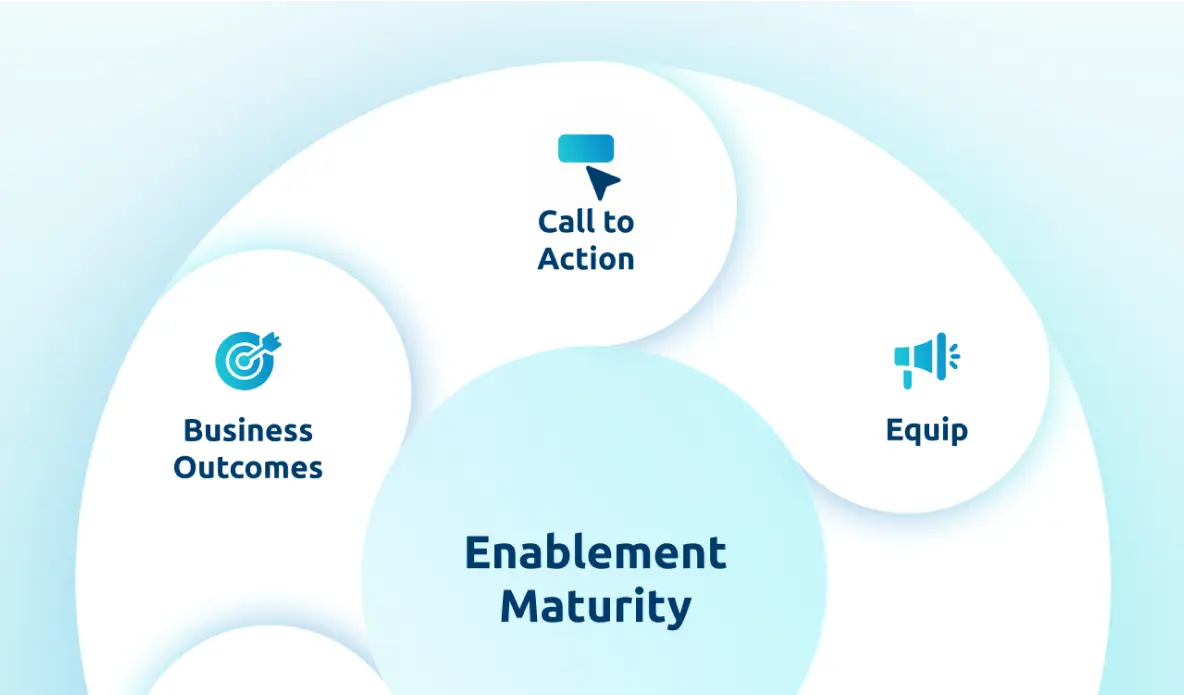According to CMSWire, 79% of executives say that a great digital customer experience is extremely or very important for their business. So, how can you prioritize a great customer experience through enablement efforts?
Shawnna Sumaoang: Hi and welcome to the Win Win Podcast. I’m your host, Shawnna Sumaoang. Join us as we dive into changing trends in the workplace and how to navigate them successfully. Here to discuss this topic is Dannielle Hokanson, director of business development and sales enablement at OneCause Thanks for joining, Dannielle! I’d love for you to tell us about yourself, your background, and your role.
Dannielle Hokanson: Great. Thank you so much for having me. I’m excited to be here. I am a Minnesota native based out of the Twin Cities and a big Vikings fan. I have been with OneCause for 10 years here, so that’s really exciting.
OneCause offers online and event fundraising solutions for nonprofits. All of our customers are nonprofits, and that is really a big piece of my reason for why I work here and why I do what I do. I really enjoy feeling connected to all of the impact that our customers have in our communities. I think that’s been felt especially in the last few years. That’s really a lot about my why.
In my role, I started in a seller’s seat. I was a seller here as an individual contributor for five years moved into a sales manager role and then moved into building our sales enablement function and strategy. That’s a little bit about me.
SS: We’re excited you’re here, Dannielle. Congratulations on 10 years. I know that you actually built OneCause’s enablement discipline from the ground up. Can you share some of your best practices for building an effective enablement strategy from scratch?
DH: Yes, it can be extremely overwhelming to figure out where to start. I’ve talked to a lot of other people who are in the same boat and I think that’s really the hardest part because there are so many things that sales enablement does. Just figuring out where the best place to begin can be hard.
Ultimately we have been working on a very mature product, and so we had regular releases and regular training, and it just was not as complicated. We’ve been building our new product, and so having to move into a much different pace was something that we just had to adjust and build an enablement strategy around.
When I started, I really just tried to categorize it into buckets. The content bucket, the process bucket, the tech bucket, and then the sales readiness bucket, and really audit where we were at in any of those buckets. What are we doing well, what is working, and then where are our main gaps and challenges figuring out how to prioritize within each of those buckets, and what’s going to have the biggest impact on the team? There might be some small wins in those buckets that we can get out immediately, quickly, and then there were some bigger long-term things that we wanted to focus on to get the team enabled and successful and having the tools that they need that were a little bit longer term, like the implementation of Highspot.
I think everything I do centers around prioritizing what’s going to make the biggest impact because there’s always more work than there are hours in the day. That’s really how I decided to tackle it. We just took it one thing at a time.
SS: Got it. I couldn’t agree more. You mentioned that there’s been sort of a shift to this notion of continuous deployment sort of back nature of your business now. I know that you guys work in a really fast-paced environment. What are some of the unique challenges that this presents for you and the teams that you support?
DH: That’s a good question. We’ve moved from having a few regular releases to our product team is just incredible, and amazing, and they are putting out a lot of new products and a lot of new features every single week. We are really tasked with keeping up with that level of innovation. Again, it’s really figuring out what is urgent, what is important, and what is not important because I might only have a couple of weeks in between when I know something’s coming and it’s out.
Instead of just more of a scheduled type of information, we have to be very nimble and the team has to also be very nimble. Really just figuring out how much attention a certain feature or a certain update needs, and then figuring out which of the components we’re going to have to use to get that information out. People can really only retain so much information, especially when it’s coming constantly.
We are really focusing on a lot of repetition and focusing on a lot of different ways they may see hear or access the information. We are just trying to have a really broad strategy, but again, that just takes time. We have to balance, not getting them what they need without overwhelming them, so that is the key.
SS: Absolutely. How has Highspot helped you overcome some of those challenges and what role has it really played in sort of the evolution of your enablement strategy?
DH: Highspot has been instrumental in our enablement evolution, I would say. One thing is. it’s a long-term strategy. We really baby-stepped into it one little thing at a time. Just starting with the content management, just starting with having the information because there’s so much information coming to them. We’ve been working since our implementation last year to really have it be the go-to place for information.
I think we all start in SharePoint and you really need to know what you’re looking for in order to find it. Having Highspot and moving all of our content there, whether it’s content for the buyer experience or our internal content has been really important to having the reps feel empowered with this fast-paced environment that we have. We really just started with one thing at a time. Content management, templates for pitches and getting that buyer experience, then adding some plays, then layering another team.
We’ve tried to be really thoughtful, not to do everything at once, and really get good at one piece at a time and get the team really comfortable at using one piece at a time because then they like it, it’s helping them, and then they are more apt to embrace the additional features and functionality that we roll out. It was really one thing at a time, but we needed to have a better way for them to find what they needed, when they needed it, and get it out to the right buyers essentially.
SS: I know initially you guys implemented Highspot to support your sales teams and I want to get to the other teams in a moment as well. For your sales team, can you tell us a little bit more about the impetus for investing in an enablement platform for your sellers?
DH: When we initially started looking at just our overall enablement strategy and looking at those buckets, a huge gap for us was in that content bucket. I think for everyone who doesn’t have a content management solution, we probably are all starting in SharePoint, and again, you really need to know what you’re looking for. It’s not a great navigation solution. It was really hard for people to know what even existed.
What reps were doing is they’re trying to make it work for themselves and they may have curated their own little bucket of favorites, but then we kind of lose control over what’s the most current. Are they using the current content? Do they know what good content that they might be missing? They just didn’t have a way to really effectively understand what was available to them. That was a very huge gap and where we wanted to start on kind of our Highspot journey was our main focus was the content management piece.
I would say the hardest part about the implementation had nothing to do with Highspot. It was about thinking long term, how do we want to organize this information for our team and then how do we want to grow with this tool? We really just started with our new business team, but when I implemented the tool, I really planned the spots and the organization so that we could easily add in other teams as we grew. That’s where we started. It was the biggest need we had, and it was one of the things that was able to make the biggest impact on our enablement strategy.
SS: Absolutely. As you alluded to earlier, you also recently expanded your use of Highspot to support your Customer Success team. Can you tell us a little bit about your decision to bring the CS team into Highspot and why was that an important move for your business?
DH: Our CS team had the same challenges that our pre-sales new business team had where our marketing team is amazing. We have so much great content, great thought leadership, and great information about how we’ve launched a new platform in the last couple of years. We had a lot of education to do with our current customer base to help them understand the new offering available to them and that is a huge lift to get to that place and transition all of these customers to helping them just know what is now available to them.
For that CS team doing that manually, trying to find that content, trying to put together what is really the right thing to do, that was very time-consuming. We really need to support that CS team to improve our customer journey. We’d already kind of invested in the buyer journey, but now we needed to invest in our customer journey and be able to get them the resources they needed quickly, and easily, and for us to be able to package that up for them.
They don’t want to spend a lot of time, they are able to say, oh, I know this customer. I know they need to get educated and this is all bundled up for me and available to send out. There’s just a lot of information that we want to get to customers and it was just difficult to do. We were getting in more of a manual space. This was a way to help them really level up the customer experience.
SS: I love that. Now you talked a little bit about some of the similarities, like needing to make sure that they have kind of one source of truth for all the key content that they need to deliver, whether it’s pre-sales to the buyer or post-sales to the customer. Since you leverage Highspot to support both pre and post-sales, what are some of the similarities, but also differences in how you use Highspot to support each of those two teams?
DH: I would say the implementation, having both teams has done a few things for us. One thing is that it has helped us understand exactly what content we need and have more effective communication with our marketing team. What we found is a lot of what new business needs is also very similar to what Customer Success needs. We just have better visibility into that and then we have better visibility to build that communication plan that is similar, but different.
We definitely have leveraged very heavily templates. We have a very high volume business, and so that has been really helpful in helping adoption and helping the team know what they need to send and when. We have very similar, I would say, content strategies and enablement and all of that for the two teams. What we are looking at, which I haven’t quite implemented yet, is how we can transfer some of the communication onto the next contact.
We’re kind of looking and thinking about ways that we can continue to actually level up that transition from a buyer to a customer, and that handoff, through Highspot. We’re definitely continuing to look in ways that we can expand and continue to improve, but moving both teams to, this is your hub, this is your information. Getting everybody much more on the same page from messaging to content, all of those things, has been really instrumental in helping us make this transition.
SS: Yeah, I love hearing that. You touched on it briefly, but one area where you guys have seen a lot of momentum is by engaging your buyers and customers through Highspot. You guys have, I believe a 98 percent pitch adoption rate within your organization. What are your best practices for leveraging Highspot to engage your buyers on the pre and post-sales side of things?
DH: Well, I knew if we were making this investment for our leadership team, being able to show adoption was really important. If we’re going to make the investment, we want to know that the team has really embraced it and that it’s effective in its use case that we are asking for that investment. Essentially, once we did the implementation, I constantly looked at the metrics, and the analytics were awesome. One of the things we just like to look at beyond just the actual pitch and its effectiveness is just the adoption from the reps. What are they sending? How often are they sending? What is their kind of success?
We would look at their pitch count. One of the things I really like to look at is the percentage of their pitches that are viewed because somebody could be sending just a ton of content and nobody’s looking at it. We really looked at our metrics and were able to kind of find some success metrics or ranges that we considered success metrics. Then we talked to those reps to figure out what they were doing that was different. How can we level up the rest of the team to meet your success level? We really helped them. They led some trainings and they were really great champions to encourage other people to take on some of their best practices.
We were then able to build on those best practices when we onboard new reps, as well as when we onboarded our CS team because we were able to learn from what is really working. It was a lot of, honestly, small things that made a big impact. A lot of our team likes to use the Outlook plugin. They bring their links to the top. Just all these very minor details, but they really do create a lot of success.
SS: I love that. I often think that that’s my favorite, like, the unspoken impact of Highspot is that ability to scale what good looks like across your team in a more efficient and effective way to help drive up productivity. In addition to obviously amazing pitch adoption, I believe you guys have amazing recurring usage across the board. I think you guys are at 94 percent recurring usage of the platform. What are some of your best practices for driving that adoption across your customer-facing teams?
DH: As I said, adoption, we were very focused on it. We really wanted to make sure we had a lot of success and everybody was embracing the tool. I think, for us, our success really came from our initial rollout and what our objectives were. We really wanted to have the teams, number one, understand why it mattered. Why do you want this tool? Why does this tool matter to you? How is this tool going to make you more successful? They need to understand why they want to use it as opposed to us telling them to use it.
We started with the early reps that piloted and really got used to Highspot and they were huge champions. They were a really big piece of the rollout too. Some of them had lower tech aptitude and they were like, it’s easy. I love it. People are responding. They were really able to sell it from their own seat to say, this is working, you guys are also going to love it. I think that was really important, just how we rolled that out.
The second piece was we weren’t trying to do everything at once. We really just started one thing at a time. Here’s your content. Here’s how you find it. Here’s where it is. We started with templates, just really creating, here’s the templates you need to get started. We didn’t try to get them into customization yet. We really just got them good at one little thing at a time so it felt easy for them, they really embraced it, and they really loved it.
The other, I think, big piece to the success is that our sales managers and our sales leadership are huge advocates. I think without their advocacy, it would be a lot more difficult to get to that adoption level. They really embraced it, they were advocating for it, they were talking about it and they left a lot of space for their teams to talk about it and share successes and wins, and then also to hold refs accountable for their adoption.
They were looking, if there was anybody who maybe needed extra help, needed extra training, or had not reached a good adoption level. I think the partnership with the sales leadership was really instrumental. I think, honestly, in any enablement effort, you really need their buy-in and their partnership. Just like I said, we’re really trying to build Highspot into our hub. We want people not to have to look in five different places for information as much as we can. We want to move that information into one place. The ability to really have all the different types of information, whether that’s in a play, whether that’s just in a spot, it’s internal, it’s external, it’s knowledge.
We are looking forward to hopefully implementing the Training and Coaching tool. That’s kind of our next piece to the long-term strategy. I would say those are really the three things. We were very mindful of the rollout. We made sure we had champions. We made sure we had internal support, and really just continued to try to drive all of their activity to one place.
SS: I love that. You’re doing all the right things there for sure. Amazing adoption. Last question for you, you were recognized on Highspot’s list of women making an impact in enablement earlier this year, which is one of my favorite ways to recognize our leading customers. What are some of the ways that you’ve been able to drive business impact through enablement at OneCause and how has Highspot helped?
DH: One of our big challenges has been the transition from a platform that has been fantastic, and well-loved, to a new platform that is growing and moving so incredibly fast. I think without having a really clear, dedicated enablement strategy, we would not have been able to make as much of a transition as we have or get as many people excited about our new platform, and informed on our new platform. We really had to transition our entire team on all new demos, and talk tracks. All the things that they needed to learn, the entire team had to learn at one time. It was really like a full team onboarding of a product. I really don’t think I could have done it without Highspot at all, honestly.
I think it is our team’s favorite tech tool. We have people talk about it on team calls all the time about how much they love it, the new content they found, and the content they found that helped them close a deal or understand something. It would have been really difficult for us to have made this much progress without a tool like Highspot because it just has been so embraced by the team. It’s been so easy for me to use, so easy for me to implement the things that I needed to do that I needed to communicate, and really get buy-in from the team on.
I’m a huge advocate. I love it so much. It’s been a game-changer for us. Our team would all probably tell you it’s their favorite tech tool. It’s just been a huge game changer in our entire enablement strategy. Having the tools to implement what we need to get done has been really key.
SS: Danielle, thank you so much for joining us today. I really appreciate it.
DH: Thanks for having me.
SS: To our audience, thank you for listening to this episode of the Win Win podcast. Be sure to tune in next time for more insights on how you can maximize enablement success with Highspot.




